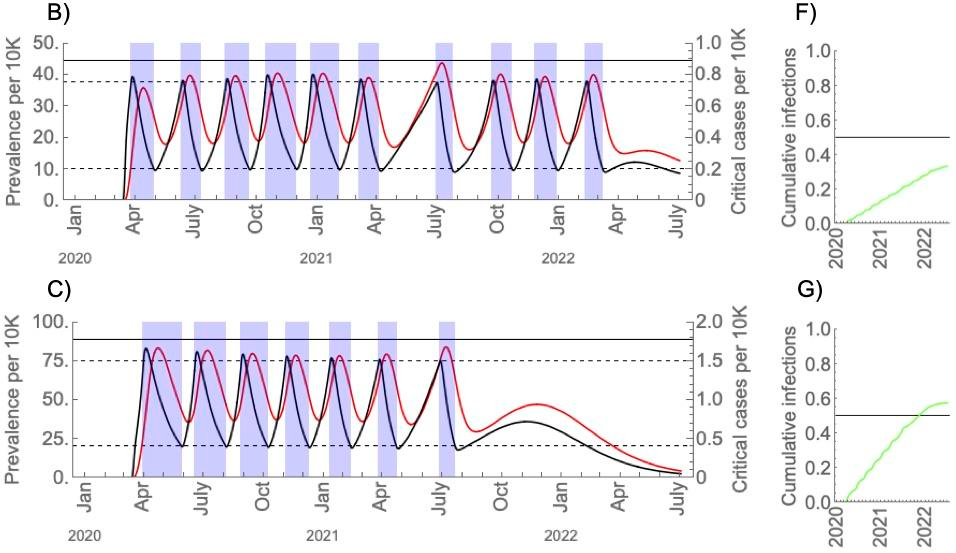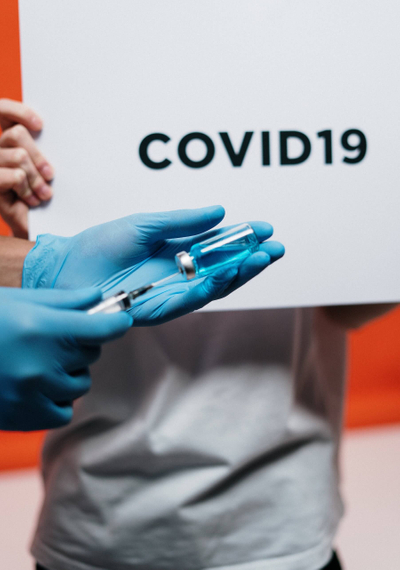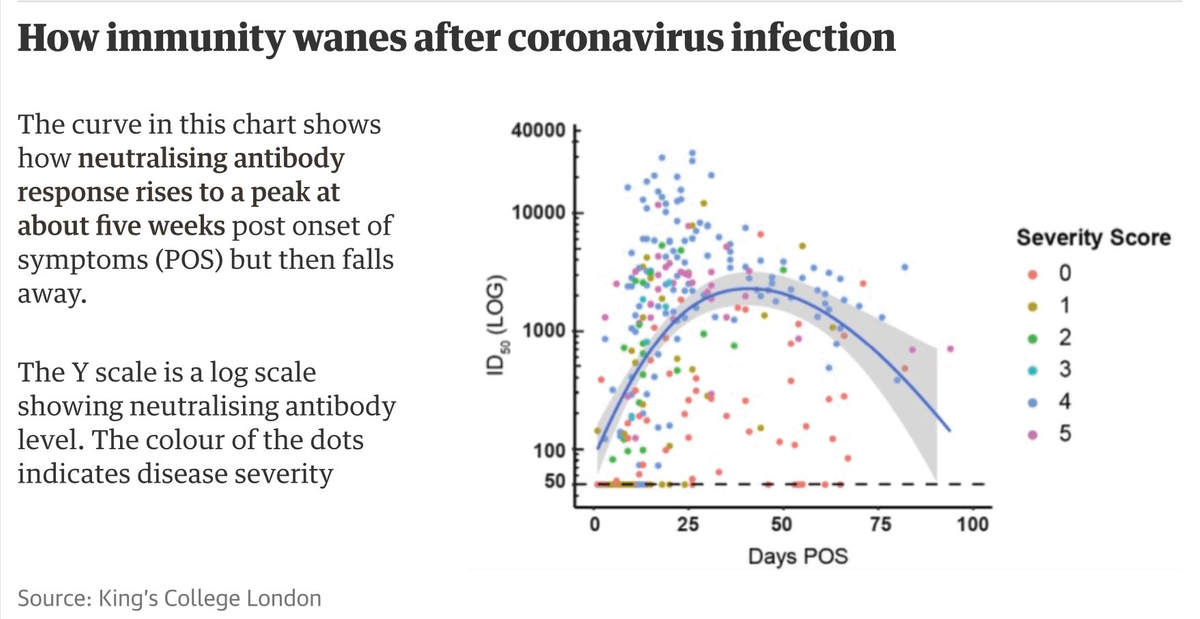Michael Blok, July 19th 2020 (in collaboration with anonymous experts from the medical and epidemiological field).
What is the worst-case scenario in case of continued spread of the virus?
Most governments are now convinced that the Coronavirus needs to be controlled, then suppressed, then eliminated, and then eradicated. Key elements of such an approach:
- Mass testing, in-depth source/contact tracing and strict isolation of infected and suspected cases
- Masks in public spaces, regionalization of control measures, alert levels and entry controls.
But some governments disagree, most notably Sweden and the Netherlands, instead aiming for controlled spread of the outbreak. England and parts of the US seem to be heading the same way by default. And other countries may try to suppress, but fail and end up in a situation of more or less controlled spread. How bad would that be?
The most extreme scenario leads towards a bankrupt country of damaged and disabled people. Far-fetched? Let's go on an intellectual journey of discovery.
The strategy of controlled spread towards Herd Immunity
The most explicit commitment to controlled spread of the virus towards Herd Immunity was announced by the Dutch government on March 16th. The outbreak will be controlled (braked) to maintain access to hospitals. This principle is still a major factor in the Dutch approach. The RIVM (Dutch CDC) claims that the virus will spread until 60% of the population has been infected. If we adopt that number, around 50,000 people (0.7% of 60% of 17 million) will die in the Netherlands alone. Sweden has a similar policy, but did not officially announce a goal of Herd Immunity. The US and England seem to be bumbling into the same outcome.
Please note that any strategy that does not aim to minimize the extent of the outbreak is a Herd Immunity policy, because that will necessarily be the end point (unless a vaccine or treatment interferes). Only by putitng a stop to the virus can another outcome be envisaged (eternal suppression, virus mutation, local elimination with travel restrictions, or eradication of the virus). We do not consider "take it on the chin" uncontrolled spread as an option for any government as it would wreck society with power cuts, mass panic and international isolation. More information in this article.
The high death tolls of controlled spread of the virus are not a secret. Because that is a terrible sacrifice for unnecessarily allowing the spread of the virus to continue (and also because it requires years of chaotic immunity building), such a mitigation policy towards group immunity has quickly become unpopular in the world. It would also be unpopular in the Netherlands and Sweden if the full light of day was allowed to shine in, hence the misleading communication that characterizes the policy. But still the authorities persist, for reasons that fall within the realms of face-saving, bureacracy, arrogange, lack of moral leadership and perhaps even conflicts of interest.
The chart below comes from an article in the journal Science, and shows how controlled spread of the virus might be achieved. B and C are similar scenarios with different assumptions that do not matter to this article.

With controlled spread, the hope is that a vaccine, or possibly a medicine, will become available in the coming years. This will prevent the full death toll that herd immunity would entail, of perhaps 0.5% of the population.
It is certainly possible that an effective and safe vaccine or medicine will one day come. But that is not certain, and it is also quite possible that a vaccine will only provide protection for a few months, and then only partially. Because the disease will be less dangerous for young people and booster shots may be necessary, not everyone will have the vaccine administered, which in turn will keep the virus circulating. However, vaccination of high-risk groups will get rid of sharp edges of the pandemic. This also applies to a drug, although questions arise about how much impact it will have in a disease that many infected people do not even notice, while still suffering damage to the lungs.

So a vaccine or medicine is not a solution you can count on. Another salvation could come from a change in policy in countries that go for controlled spread by choice, default or incompetence. This could be the case if the public becomes tired of the health damage, if a foreign country forces the Netherlands to suppress the virus, or if (when) a second lockdown has led to massive unemployment. Then you can assume that the policy will tilt towards real suppression.
But you cannot defend a policy with the argument that it will one day change (and certainly not now infection rates are rising again in many European countries and the US). Nor is it reasonable to defend policies that take an uncertain factor such as a vaccine as the end point. And these past months we have learned that the virus leads to long-term damage to the lungs, nervous system and/or heart and blood vessels in about 10% of the infected. That makes a controlled spread policy even more unwise now than it was in March.
Is controlled spread even more risky than we thought?
But it may be much more unwise even than it seems. If what we already know about the virus is combined with the logical consequences of the policy, without resorting to wishful thinking about vaccines or medicines, then a very disturbing picture emerges of years of wearing out of the population. At least as a possible scenario.
Let's run through the Science and logic. What do we now know about the virus?
- It kills about 0.7% of the infected people
- A rough but increasingly heard estimate is that some 10% suffers long-term or permanent damage to the lungs, nervous system, blood vessels and other organs.
- If you have been seriously ill, you become more immune than if you hardly noticed anything.
- Immunity largely disappears within a few months, perhaps only weeks.
- When you get infected for the second time, the Coronavirus seems to cause worse symptoms than the first time.

Let's then build the puzzle: what will happen when the virus spreads through the population? For example, if it takes a year to get to 60% infections, by the end of the year the immunity will already be largely gone. The virus may also mutate. So there will be a second round of infections, and a third round and so on. Note: the hoped-for Herd Immunity is only possible if you pull a sprint, but that destroys the economy and public health.
Below is a simple and indicative calculation model that shows that if immunity withers away in months, you never actually build Herd Immunity, even at extremely high infection rates, and that the death toll then far exceeds 0.5% of the population. Plus the millions of temporarily or permanently damaged people. This model also assumes that a second infection is less severe, as with many diseases. The model uses The Netherlands as an example, and assumes a successful steady buildup of infections by allowing ICUs to fill up for years. Percentage decimals use commas on this European computer.

But what if the second infection is worse?
With most illnesses you do get sick a second time, but then your immune memory (a kind of library of diseases survived that does not prevent the next infection from that disease, but does help fight it) helps to curb the illness, and you will experience fewer symptoms. With the new Coronavirus, there are now strong indications that at least some of the infected persons will become sick a second time. This is because the virus often causes damage by putting the immune system in overdrive, which can be more dangerous the second time, just like a wasp sting. The physical damage from the first infection can also decrease your resistance the second time.
As unbelievable as it sounds, a scenario looms in which, in the end, almost everyone becomes infected several times over the years
With SARS-Cov-2, you not only lose (some of) your immunity, but a second infection can also be worse than the first time. As unbelievable as it sounds, a scenario looms in which, in the end, almost everyone becomes infected several times over the years. In the first round, 5 to 10% are already damaged for a long period or permanently, but after the second, third and next round you reach almost everyone (except perhaps those who were always immune to Corona and stay that way).
This yields a country in which almost everyone is damaged, from limited lung function to loss of sense of smell to cardiovascular disease. Those who experience relatively mild complaints the first time are susceptible to a quick re-infection, those who have suffered more serious symptoms will avoid infection for at least a few months, but then it will be their turn again. This is not only a humanitarian catastrophe, but of course also completely prohibitive in terms of rehabilitation costs in health care and lost productivity in the economy.
But is such a doomsday scenario really possible?
Is such a disaster scenario also likely? In any case, it is not impossible, given what we know now. Such a development becomes less likely if it turns out a second infection tends to progress less badly, which is still quite possible, or if a second infection is rare, which may very well be possible. There is still much uncertainty in general, but that is precisely an argument for the use of the precautionary principle (a legal principle in most jurisdictions): first limit the risks, and then only allow mass contamination if we know that infection is not so bad, or if there's nothing we can do to stop it. Look below at the list of damages that writer Franklin Veaux lists in response to the question "How can a disease with 1% mortality shut down the United States?".. A list that has already been embraced by Dutch Government Scientific Council (OMT) member Marion Koopmans as a summary of the massive damage caused by braod spread of the virus through the population.

Even if much is still unclear, it's a near-fact that immunity disappears over time and that several % of the infected suffer long-term damage. Even if a second infection is not so bad, long-term spread of the virus amounts to wearing out the population. And the economy, as "yoyo lockdowns" eat away at business confidence/investment and consumer confidence. Labor productivity will be decimated if mass invalidity happens. Group immunity will never be achieved, because gathering immunity cannot be built up faster than Herd immunity breaks down (at least not without destroying the economy and public health with an Immunity Sprint). And since any policy other than maximum suppression of the virus comes down to the quest for Herd Immunity (plus the hope of a vaccine or drug), only suppression is an acceptable choice.
To prevent this, a government can choose between wishful thinking (allowing the virus to circulate to some extent plus a vaccine or medicine) or suppression of the virus, like almost all countries are already doing or at least trying. Then, in cooperation with other countries, we can eliminate or even eradicate the virus. Which option would you choose?
Disclaimer: This article was not written by a physician or epidemiologist (your servant is an economist and strategy consultant), but it was written in collaboration with experts. The last draft version was found to be scientifically correct in terms of content. Still, it would be nice if the name of a leading expert would appear next to (or instead of) mine. But as you also understand, a physician is not likely to publish such thoughts about possible scenarios under his/her/their own name (because Scientific publications are about things that you know for sure, and because physicians prefer not to lose their jobs or argue with colleagues, like most people). Well, then let it be just a knowledgeable layman. Because the story has to go out into the world, that governments are playing with the risk of such a scenario.